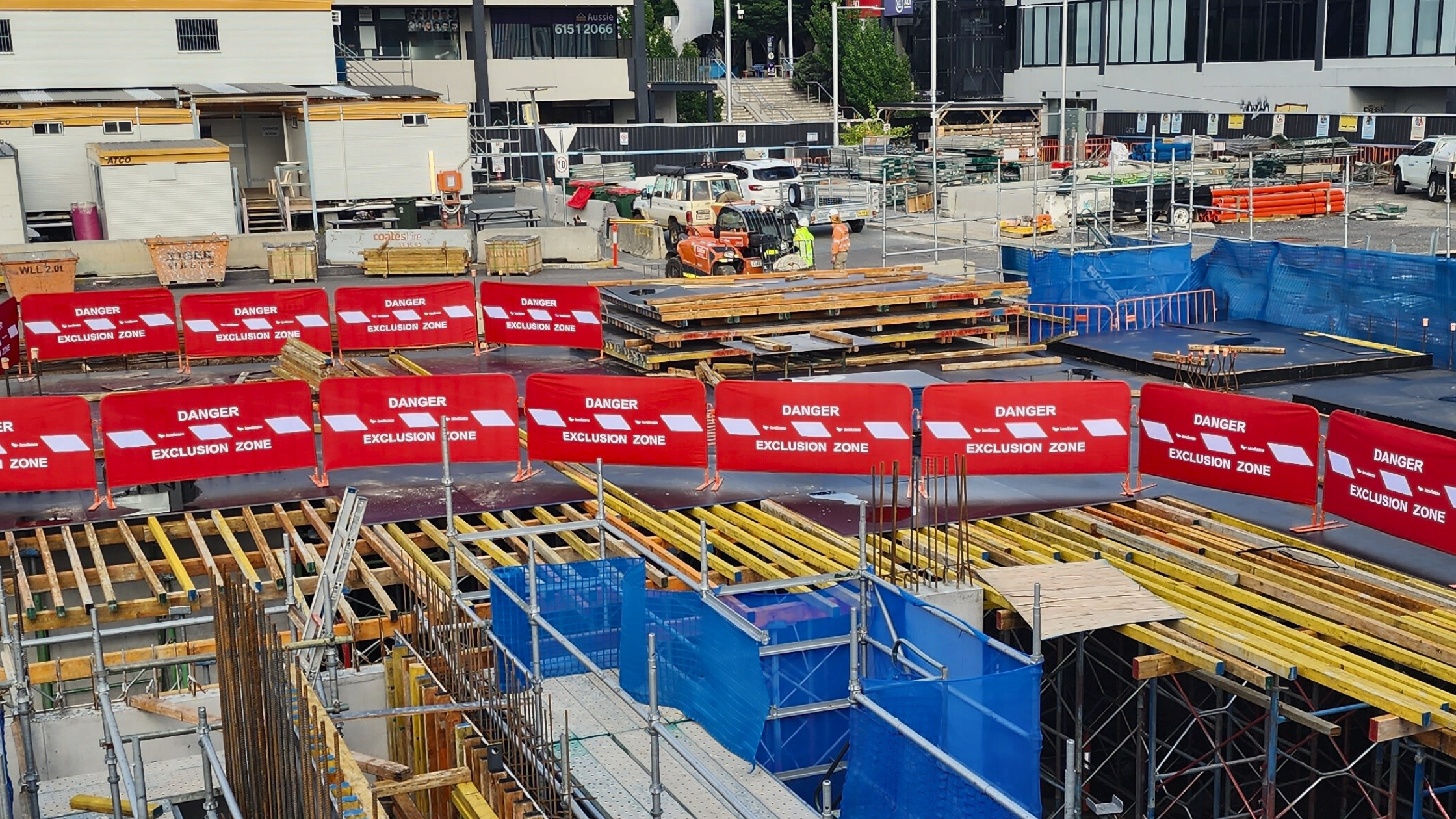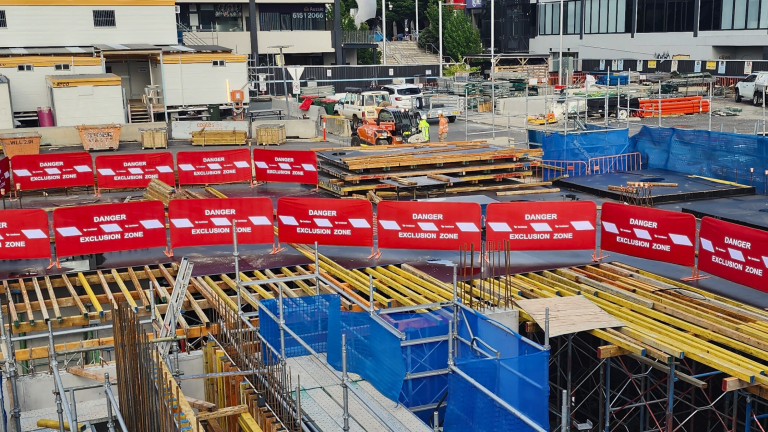Construction sites are dynamic environments where safety is paramount. Standardized safety signs play a crucial role in maintaining a secure workplace. In Australia, these signs are governed by the Australian Standard AS1319-1994, which ensures uniformity and clarity across all construction sites.
What Is Australian Standard AS1319-1994?
AS1319-1994 sets out requirements for the design and use of safety signs in occupational environments. Its primary goals are to:
- Regulate and control safety-related behavior
- Warn of potential hazards
- Provide emergency information, including fire protection details
This standard is essential for creating a universal language of safety that can be understood by all workers, regardless of their background or prior knowledge.
Categories of Safety Signs For Construction Sites
AS1319-1994 outlines several categories of safety signs, each serving a specific purpose:
Mandatory Signs
- Blue circular shape with white pictograph
- Indicate actions that must be carried out
- Example: “Safety goggles must be worn”
Prohibition Signs
- Red circular shape with diagonal slash
- Indicate actions or activities that are not permitted
- Example: “No smoking”
Warning Signs
- Yellow triangle with black border
- Warn of hazards that are not likely to be life-threatening
- Example: “Forklift hazard”
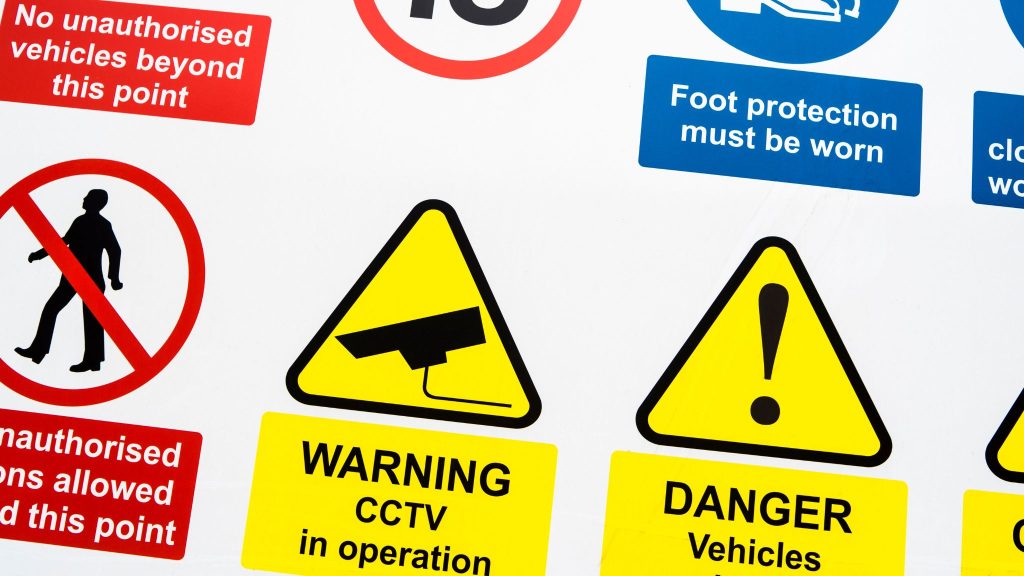
Danger Signs
- Red oval with the word “DANGER” in white
- Warn of hazards likely to be life-threatening
- Example: “High voltage”
Emergency Information Signs
- Green background with white text or pictograph
- Indicate location of emergency-related facilities
- Example: “Emergency exit”
Fire Signs
- Red background with white text or pictograph
- Advise location of fire alarms and firefighting equipment
- Example: “Fire extinguisher”
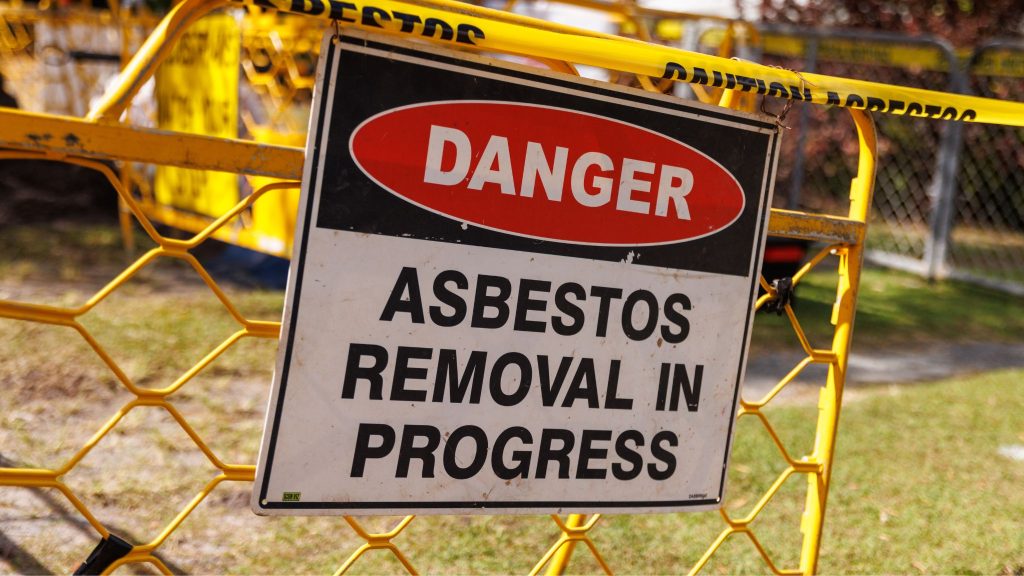
Maintaining A Safe Environment On Construction Sites.
Standardised safety signs are critical for several reasons:
- Clear Communication: They provide instant, visual information about potential hazards or required actions.
- Language-Independent: Pictographs and standardised colours allow for understanding regardless of language barriers.
- Legal Compliance: Using standardised signs helps construction sites meet workplace health and safety regulations.
- Accident Prevention: By clearly marking hazards and required safety measures, these signs play a crucial role in preventing accidents.
- Emergency Preparedness: Fire and emergency signs ensure quick access to safety equipment and exit routes during emergencies.
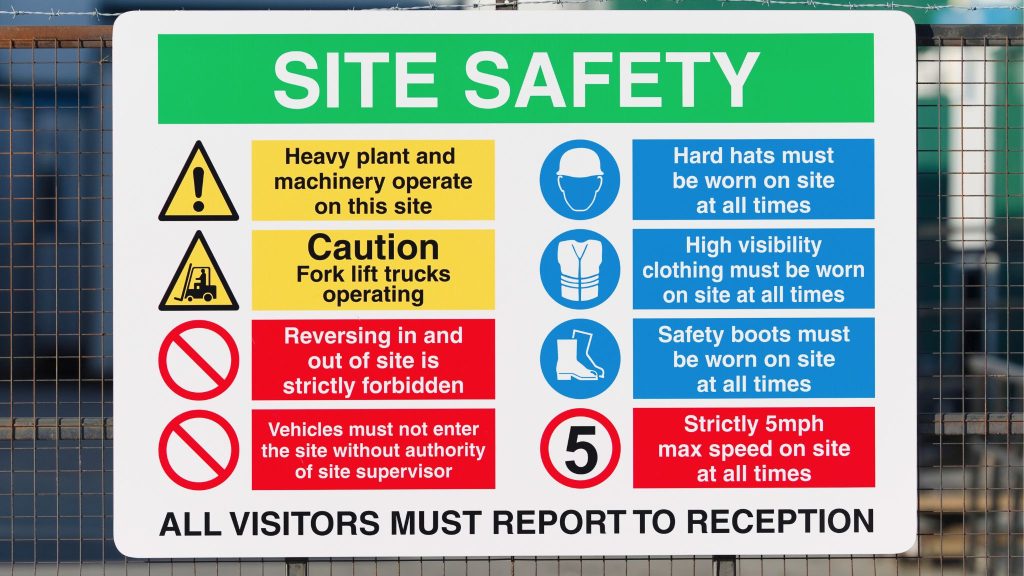
In conclusion, standardised safety signs as outlined in AS1319-1994 are essential tools for maintaining safety on construction sites. They provide a universal language of safety that helps protect workers, visitors, and the public from potential hazards. By adhering to these standards, construction companies can create safer work environments and demonstrate their commitment to worker well-being.
Contact our team of experts today for a free quote on standardised safety signs as outlined in AS1319-1994.


